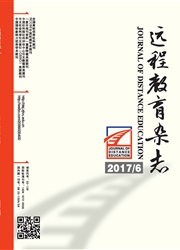

 中文摘要:
中文摘要:
目的探讨肥胖急性阑尾炎患者行经脐单孔腹腔镜手术的安全性、可行性。方法选取2014年3月~2015年9月我院收治的80例成人肥胖急性阑尾炎患者随机分成两组,经脐单孔组患者采用经脐单孔腹腔镜阑尾切除术,对照组患者采用传统腹腔镜阑尾切除术(传统腹腔镜组)。比较两组患者的一般情况、ASA(手术危险程度)分级、阑尾炎类型、手术指标、术后恢复、术后并发症等。结果两组患者间年龄、性别、体重指数、ASA(手术危险程度)分级、阑尾炎类型,差异均无统计学意义。两组患者间手术时间、术中出血量、进食流质时间、住院时间,差异均无统计学意义。经脐单孔腹腔镜阑尾切除组较及对照组术后美容满意度评分分别为9.58(9~10),8.60(8~9),差异有明显统计学意义(P〈0.05)。两组术后疼痛评分分别为2.8(1~5),3.3(2~6),差异无统计学意义。经脐单孔腹腔镜阑尾切除组有1例中转。结论肥胖急性阑尾炎患者行单孔腹腔镜手术安全、可行,并可获得较好术后美容满意度评分。
 英文摘要:
英文摘要:
Objective To investigate the safety and feasibility of single-incision laparoscopic appendectomy (SILA) in obese patients with acute appendicitis. Methods Eighty adult obese patients with acute appendicitis from March 2014 to September 2015 were randomized into the experimental group and the control group. Patients in the experimental group were assigned to undergo singleincision laparoscopic appendectomy, Patients in the control group were assigned to undergo standard 3- port laparoscopic appendectomy(SLA). The terms of demography,American Society of Anesthesiologists (ASA) classification, appendicitis type, details of operations, post-operative recovery, and postoperative complications were recorded and analyzed. Results There were no significant differences between the two groups for age, gender, ASA score, body mass index (BMI) (P〉0.05). There were no significant differences among the groups in terms of average operative time, blood loss, time to liquid diet, time to hospital stay(P〉0.05). There were no significant differences between the two groups for postoperative pain scores [2.8 (1-5) vs 3.3 (2-6),P〉0.05]. Significant differences were observed for cosmesis satisfaction scores between the two groups [9.58 (9-10) vs 8.60 (8-9),P〈0.05]. There were also no significant differences in the conversion rate between the experimental group and the control group (2.5% vs 0%, P〉0.05). Conclusion SILA in obese patients with acute appendicitis is safe and feasible, and is better in cosmesis satisfaction scores than SLA.
 同期刊论文项目
同期刊论文项目
 同项目期刊论文
同项目期刊论文
 期刊信息
期刊信息
